Exploring the Aztec Ruins, archaeologists crouch on their hands and knees in the heat of the day, delicately brushing the sand out of contours and grooves.
The Aztec Ruins National Monument near Farmington, New Mexico is an ongoing archaeological dig site that dates back to the 12th century. The unearthing process is tedious and difficult, and each new discovery often brings new mysteries.
As with all UNESCO World Heritage Sites, the prestigious designation is well-deserved. And this ancestral Pueblo is no exception.
Start at the Visitors’ Center
We started out in the Visitors’ Center where we were greeted by knowledgeable and friendly staff who provided us with lots of information. Although we hadn’t planned to spend much time in the museum, we were so intrigued that we ended up spending over an hour learning about the place before we even went outside to explore. And were we glad we did!
We saw an array of priceless objects – an original ladder, pottery, tools, and other artifacts – with hands-on displays. Models and diagrams show the layout of the grounds, communal buildings, and the kivas. And a 15-minute thought-provoking video called “Footprints of the Past” explains the history of the Puebloan Civilization.
- Ancient Bowls
- Ancient Bone Awls
- Imported goods and Jewelry
We learned that the Aztec Ruins were originally built by the ancestral Puebloans (and not the Aztecs, as the name suggests) as a political and economic powerhouse that existed from 1100 AD to 1300 AD, making it one of the oldest communities in North America and one of the most well-preserved.
The high-level planning and architectural engineering are evident when you see the multi-level buildings that housed hundreds of people. It’s also evident in the design of the community gathering places.
Advanced tools and techniques were important in the planning and construction process because natural wood, stone, and fibers weren’t available in this barren landscape. That means nearly all of the major building materials were gathered and brought in from other regions. An amazing feat, in itself!
- Tools and building materials of the ancient Puebloans
- Tools and building materials of the ancient Puebloans
- Tools and building materials of the ancient Puebloans
An example of this is in a display in the Visitors’ Center showing that just importing the necessary timber would have been a major undertaking. The ancient Puebloans trekked as far away as 50 miles north in what is now Colorado to bring in specific types of wood for this project. Enormous amounts of ponderosa pine, spruce, and aspen were felled and transported.
Some of the original wood timbers still hold up the roof in the Great Kiva. And it is these timbers that have been instrumental in providing scientists with tree-rings and a means of determining the age of these Ruins.
The Aztec Ruins are an admired reflection of the ancestral Pueblo people and a monumental display of craftsmanship. It’s a place of legends, inspiration, and mystery where visitors can get out and explore.
IMMERSING YOURSELF IN THE RUINS
Exploring the Aztec Ruins, we hiked the entire grounds, listened to our voices echo in the Great Kiva, ducked through low doorways, and marveled at the perfect orientation and linear edges of the exterior walls. We also identified various pottery artifacts, rambled through a maze of interior rooms, and detected how building styles evolved during the two centuries it was inhabited.
Although it’s a mystery as to why the original builders left in the late 1200’s, this place continues to attract sightseers and visitors, historians and philosophers, and those of us who are just interested in learning about ancient civilizations.
But to the southwestern Native American tribes, the Aztec Ruins are especially important because they are a direct connection to the ancestral Puebloan people. To the Hopi, the Zuni, and the Navajo tribes, the influences of the Aztec Ruins, steeped in history and ceremony, are still revered.
- Sign for the Aztec Ruins National Monument
- The Great Kiva
- Interior of the Great Kiva
- A mysterious layer of green stone
- Low doorways are the norm
- Excavation continues
IF YOU GO:
The Aztec Ruins are located just outside of the town of Aztec, New Mexico on Highway 550.
The admission price for exploring the Aztec Ruins is FREE.
The self-guided walking tour takes about 45 minutes and is an easy one-half mile walk.
“As you simplify your life, the laws of the universe will be simpler; solitude will not be solitude, poverty will not be poverty, nor weakness weakness.” – Henry David Thoreau
Follow us on social media!
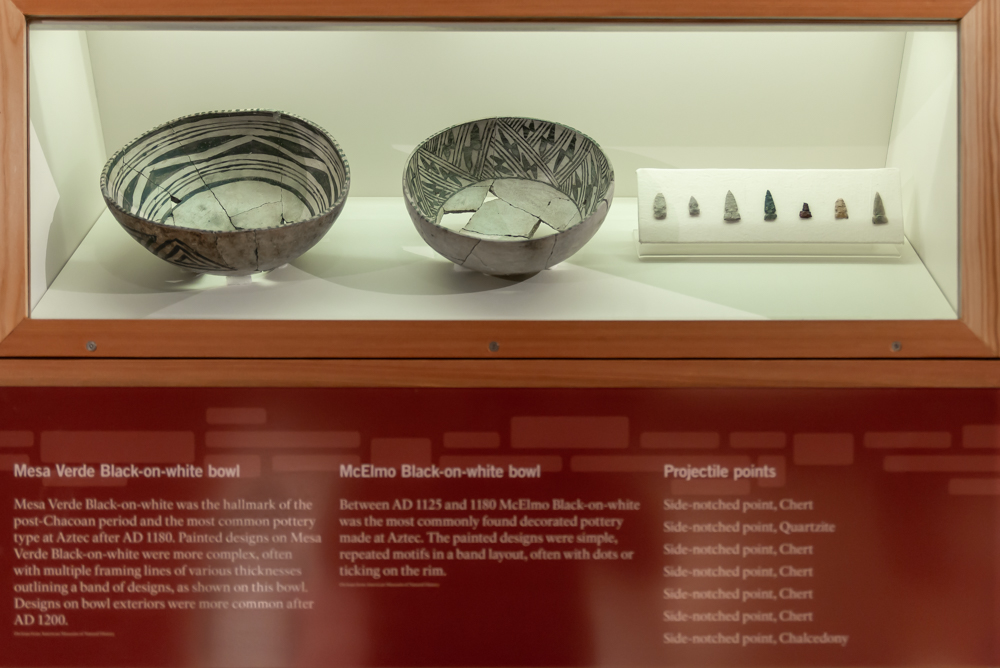
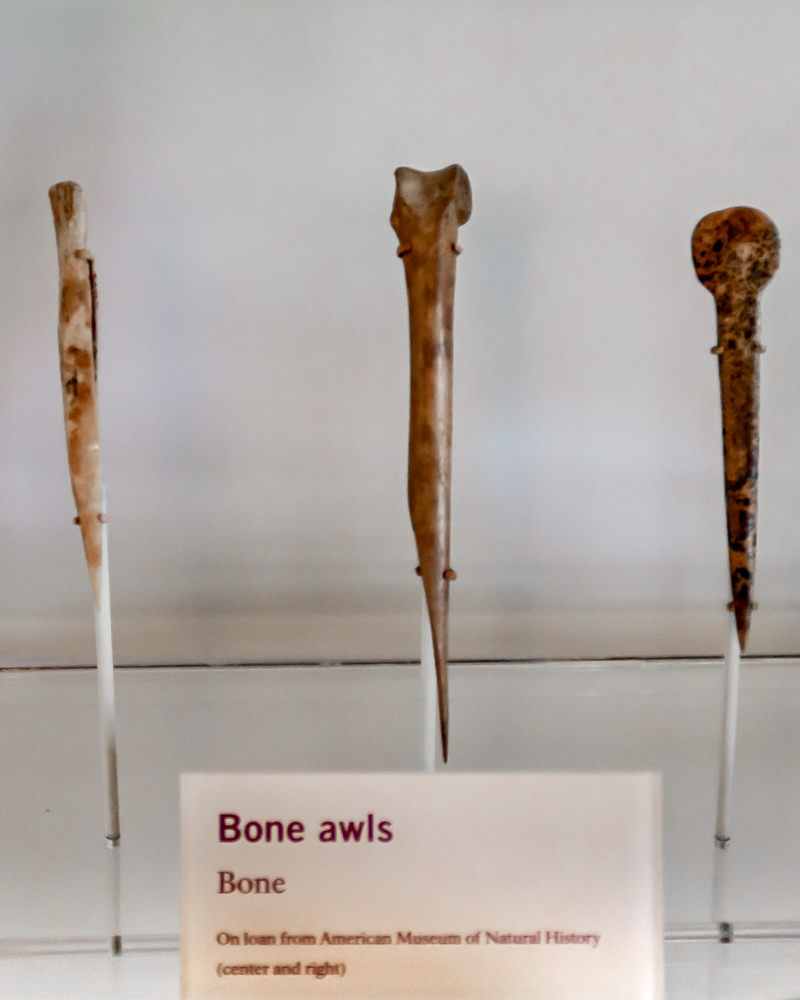
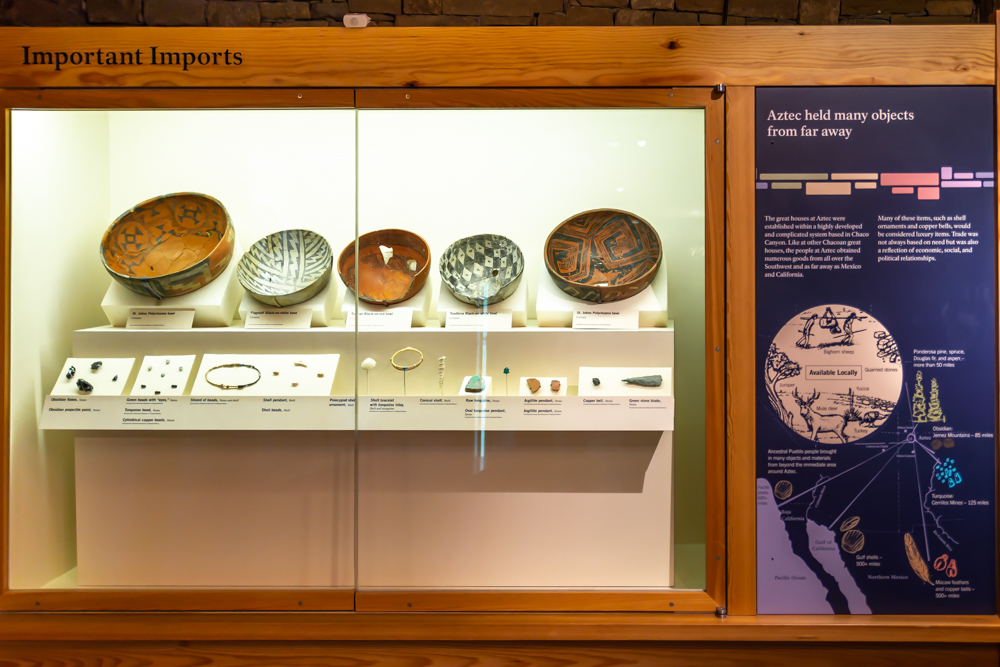
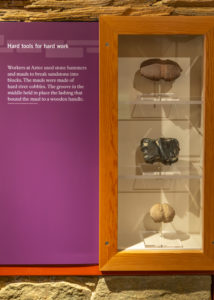
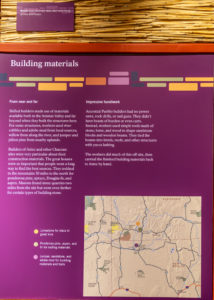
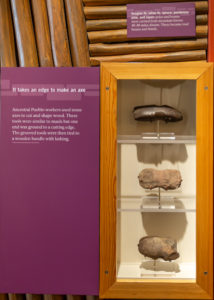

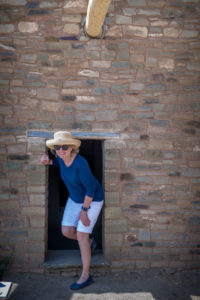
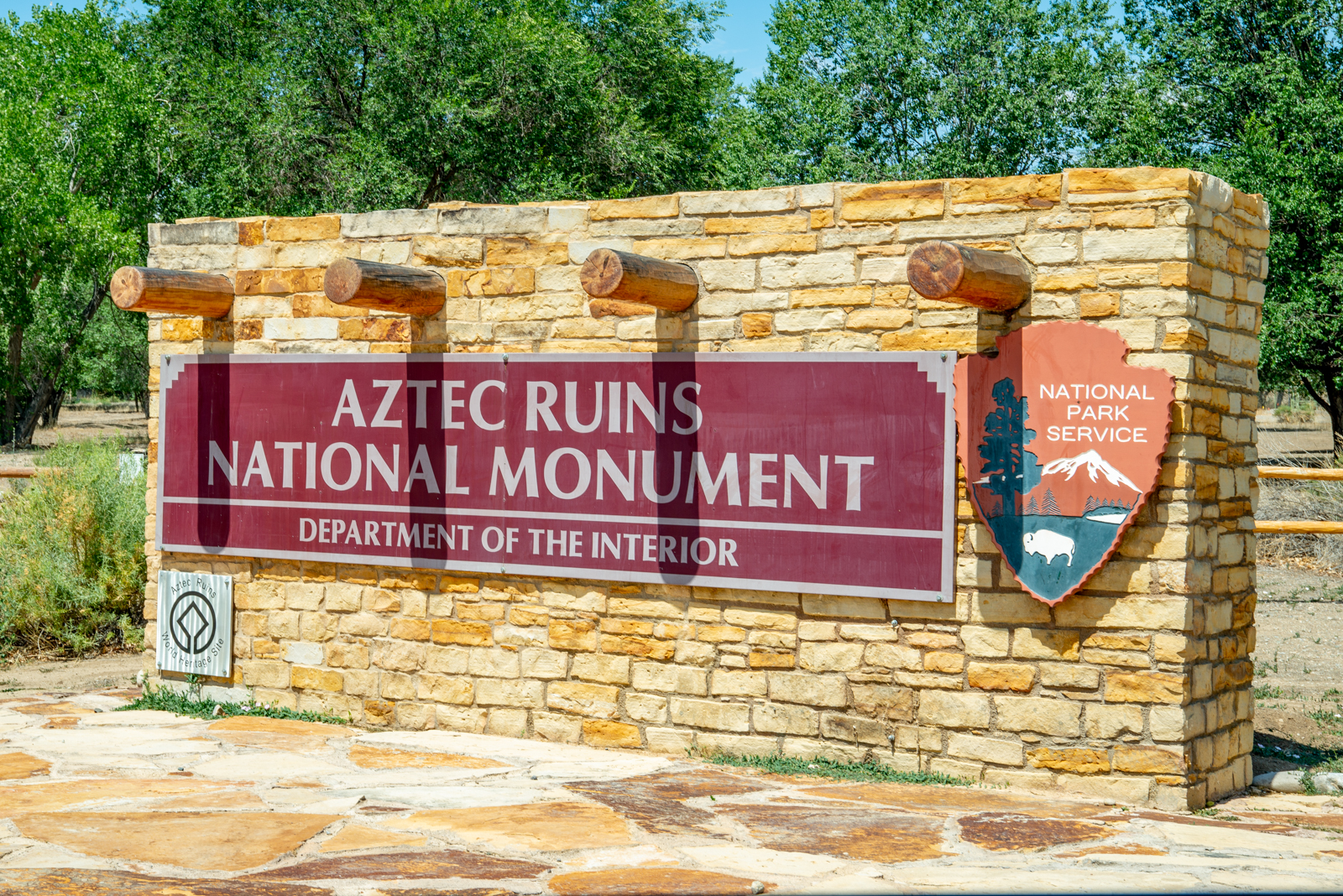
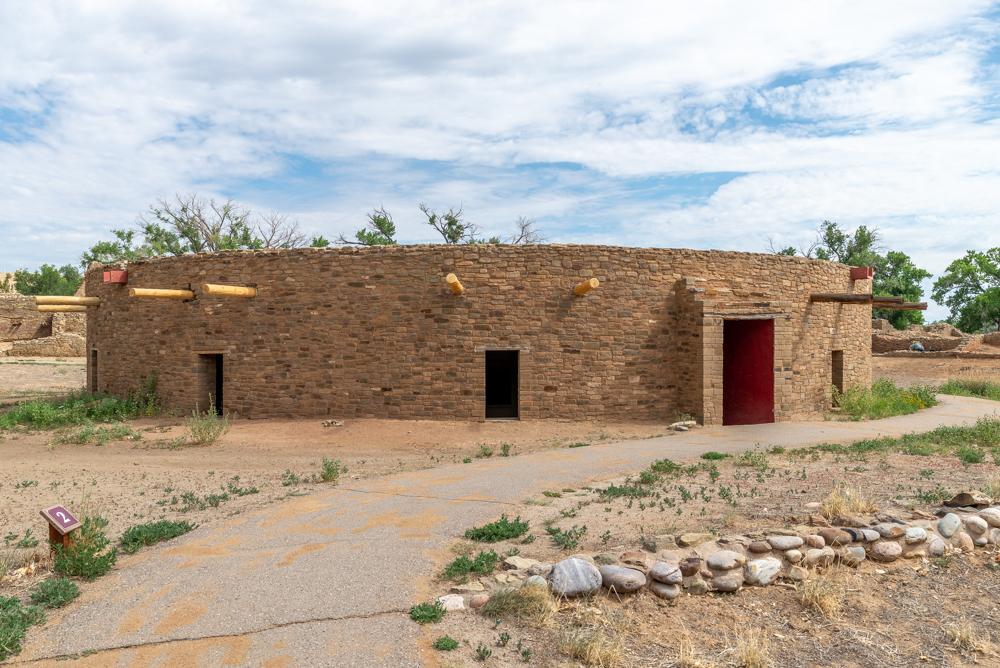
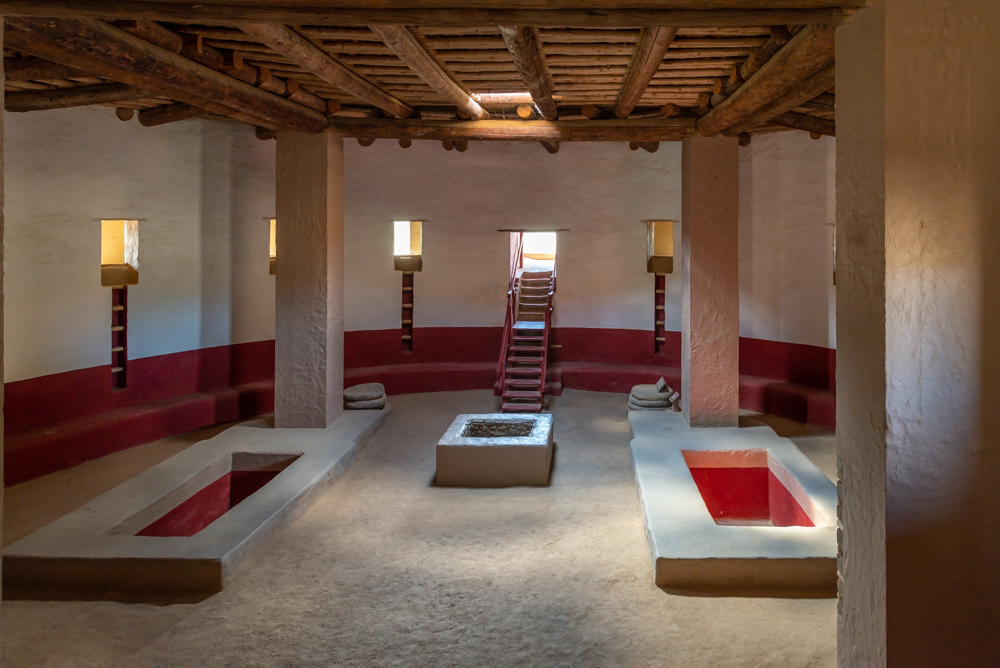
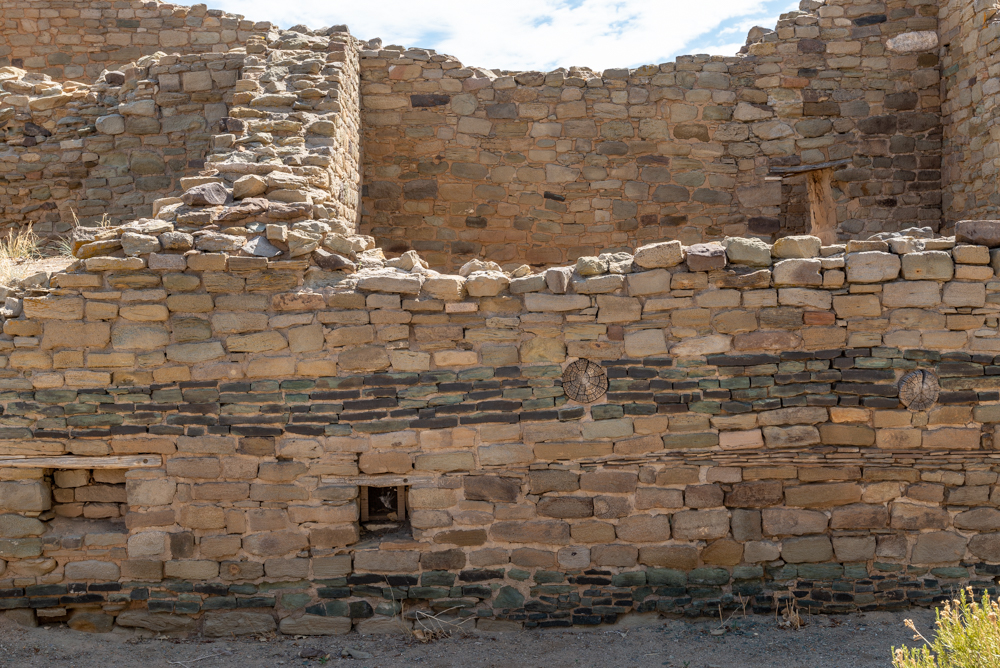
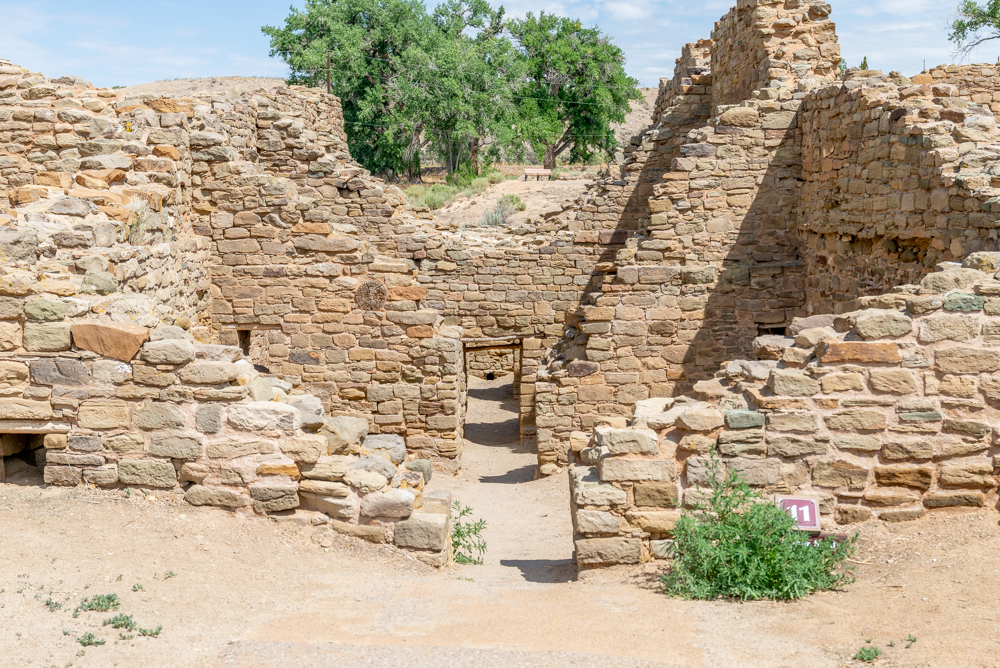
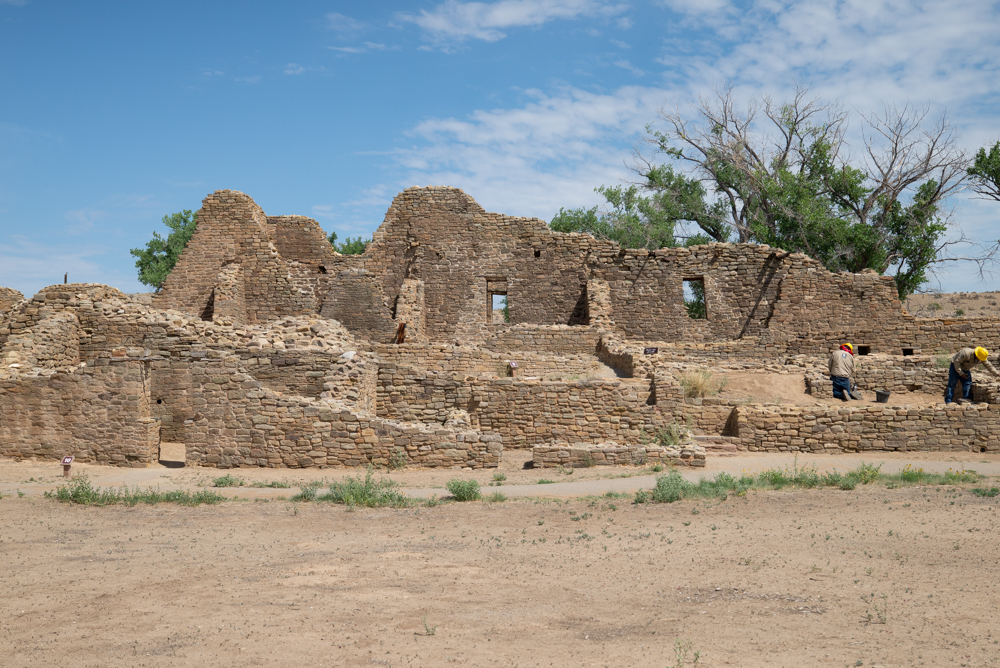
Wonderful, I just love going places with you two. Thanks
Thank you Debra.